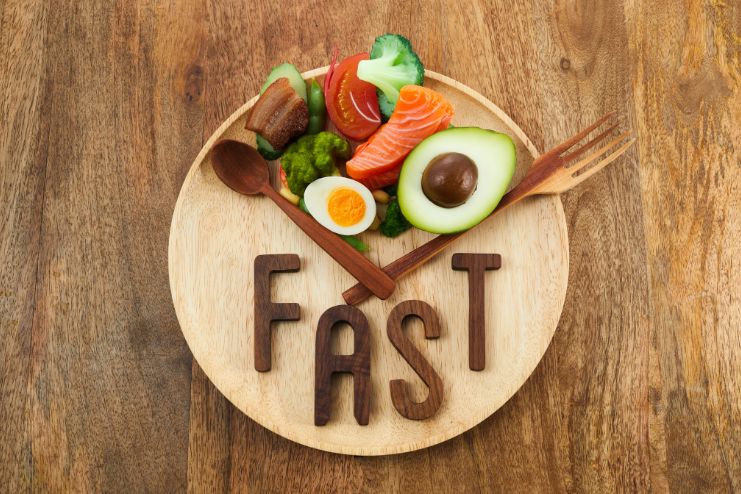Affiliate Disclaimer
Some links in this article are affiliate links. We may earn a small commission if you make a purchase through these links, at no extra cost to you. We only recommend products we find useful to our readersFasted cardio and training on an empty stomach have been buzzing in the fitness world for a while now. Some swear by it, claiming it’s the secret to burning more fat. The logic? If you work out without eating first, your body is forced to tap into its fat stores for energy instead of using carbs.
But does this actually lead to more fat loss, or is it just another fitness myth?
In this article, we’ll break down how your body burns fat during exercise and the research on fasted cardio. We’ll also explore who can benefit from fasted exercise and who should avoid it, and share tips for safely incorporating fasted workouts into your routine. Let’s dive into the science and separate fact from fiction!
How Your Body Burns Fat During Exercise

When it comes to burning fat during exercise, your body uses two main sources of fuel: glycogen (stored carbohydrates) and fat. Depending on whether you’ve eaten or not, your body will prioritize one over the other.
Fasted workouts can help tap into fat stores quickly, as glycogen levels are lower. Understanding how your body burns fat can help clarify the real impact of fasted versus fed exercise.
- Fasted state: When you exercise on an empty stomach, glycogen (stored carbohydrates in the liver and muscles) is low, so your body shifts to burning more stored fat for energy.
- Fed state: When you’ve eaten recently, your body prefers to use glycogen from the carbohydrates in your meal as the primary energy source during exercise.
- Initial energy source: During the early stages of exercise, especially in high-intensity activities, your body relies heavily on glycogen for quick energy.
While it’s true that fasted exercise can promote more fat burning during a workout, long-term fat loss relies on overall calorie balance. But is this temporary fat burn enough to tip the scales in the long run? Let’s read through it to learn more.
READ MORE: Best Cardio Exercises for Daily Fat Burning
The Science Behind Fasted Cardio

Fasted cardio has become a popular method in the fitness world, especially among those aiming for fat loss. The idea is that when you exercise in a fasted state—meaning before you’ve eaten—your body uses fat for energy instead of glycogen (stored carbohydrates). But does this lead to greater fat loss over time, or are there potential downsides?
Increased Fat Oxidation
One of the primary claims behind fasted cardio is that it increases fat oxidation, meaning your body burns more fat for energy during the workout. Since in a fasted state, glycogen stores are depleted, and your body shifts to using fat as its main energy source. However, this doesn’t necessarily lead to greater overall fat loss—it simply means more fat is burned during exercise. With glycogen levels low, your body uses stored fat as fuel.
- Short-term benefit: You burn more fat during the workout, but long-term fat loss still depends on your overall calorie balance.
- Fat as a primary energy source: This doesn’t guarantee faster weight loss, but it may support fat burning during the session.
Effect on Metabolism & Muscle Loss
While fasted cardio might increase fat burning during a workout, its impact on metabolism and muscle mass is still debated. Some studies show that fasted exercise doesn’t significantly increase overall calorie burn throughout the day.
- Risk of muscle breakdown: Inadequate protein intake can cause the body to break down muscle tissue for energy, potentially leading to muscle loss (catabolism), which can be counterproductive if your goal is to maintain or build muscle.
- Importance of protein: Ensuring enough protein before and after workouts can prevent muscle catabolism.
- No major boost to metabolism: Fasted exercise may not lead to increased calorie burn over time.
READ MORE: How to Boost Your Metabolism for Weight Loss
Impact on Performance & Energy Levels
Fasted cardio can impact performance in high-intensity workouts like weight training or HIIT due to low glycogen levels, leading to quicker fatigue. However, it’s generally more manageable for low-intensity activities like walking or light jogging, requiring low energy.
- High-intensity workouts: Performance might suffer due to depleted glycogen stores.
- Lower energy levels: You may tire more quickly during intense exercises like lifting or sprinting.
- Better for low-intensity cardio: Walking, light jogging, or cycling may feel fine in a fasted state since they don’t demand as much glycogen.
Does It Lead to More Fat Loss Over Time?

While fasted cardio does encourage your body to burn more fat during a workout, this doesn’t automatically translate to greater long-term fat loss. If you consume more calories than you burn, you won’t lose fat—whether you’re working out fasted or after a meal. Ultimately, consistency in your training routine and maintaining a balanced diet matter far more than when you decide to work out.
Here’s why fasted cardio might not lead to greater fat loss over time:
- Calorie balance is key: Fat loss only happens when you burn more calories than you consume, regardless of whether you’re fasting or not.
- Burning fat vs. losing fat: Fasted cardio burns fat for fuel during exercise, but this doesn’t guarantee more fat lost in the long run.
- Diet is crucial: A well-balanced diet with a calorie deficit has a bigger impact on fat loss than the timing of your workouts.
- Consistency matters: Regular exercise and a sustainable eating plan are far more important for fat loss than only doing fasted cardio.
- Energy levels may affect performance: Lower energy in fasted workouts could lead to less intense sessions, affecting how many calories you burn overall.
Who Should & Shouldn’t Try Fasted Exercise?

Fasted exercise can work for some people, but it’s not suitable for everyone. Your fitness goals, workout intensity, and how your body responds to fasted training are key factors.
Here’s a quick breakdown of who benefits from fasted cardio and who should avoid it:
Best For:
- Low-intensity cardio: Activities like walking, light jogging, or yoga that don’t heavily rely on glycogen stores.
- Comfortable with fasting: Those who feel good working out on an empty stomach without experiencing fatigue or energy dips.
- Fat oxidation focus: People looking to maximize fat burning during exercise, even if it doesn’t lead to overall fat loss.
Not Ideal For:
- High-intensity workouts: Fasted cardio isn’t ideal for HIIT, weightlifting, or sprinting, which require glycogen for energy.
- Those prone to low blood sugar: Individuals who experience dizziness, fatigue, or hypoglycemia may struggle with fasted training.
- Muscle gain goals: If building or maintaining muscle is the priority, fasted exercise may lead to muscle breakdown over time.
Tips for Safe Fasted Workouts

If you’re interested in trying fasted workouts, it’s important to approach them with care to get the most out of your training without risking your health.
Here are some practical tips to help you train safely in a fasted state:
- Stay hydrated: Drink plenty of water before and during your workout to stay hydrated. If you’re sweating a lot, consider adding electrolytes to avoid dehydration.
- Consume BCAAs: Take Branched-Chain Amino Acids (BCAAs) before your workout to help preserve muscle and prevent catabolism (muscle breakdown) during fasted training.
- Listen to your body: Pay attention to how you feel. If you experience dizziness, lightheadedness, or an energy crash, it might be time to switch to a small pre-workout snack.
- Keep it light: Stick to lower-intensity activities like walking or yoga if you’re new to fasted workouts. These exercises are easier on the body and won’t leave you feeling drained.
- Prioritize post-workout nutrition: After your workout, fuel your body with a balanced meal, including protein and carbs, to promote muscle recovery and enhance fat-burning effects.
- Time your fasts: Consider fasting overnight and exercising in the morning to give your body enough time to rest, while ensuring your workout doesn’t clash with your energy needs later in the day.
Conclusion
Fasted cardio has gained popularity for its potential to enhance fat burning, particularly during low-intensity exercises like walking or light jogging. The most critical factor for long-term fat loss is still overall calorie balance.
Fasted cardio may feel manageable for low-intensity activities, but high-intensity workouts often suffer due to depleted glycogen levels. Additionally, it may not be ideal for those prone to low blood sugar or individuals focused on muscle growth, as inadequate nutrition can lead to muscle breakdown.
It’s crucial to stay hydrated, listen to your body, and prioritize post-workout nutrition to support recovery and optimize results. Fasted cardio can be useful for some, but it’s not a one-size-fits-all approach. The key to healthy weight loss lies in consistency, balanced nutrition, and choosing a workout routine that fits your lifestyle and goals.
References
- https://www.hprc-online.org/physical-fitness/training-performance/how-your-body-burns-fat-and-carbs-during-exercise
- https://www.verywellfit.com/is-fasted-cardio-really-better-for-fat-loss-4057205
- https://pmc.ncbi.nlm.nih.gov/articles/PMC4242477/
- https://www.healthline.com/health/fitness/benefits-of-fasted-cardio
- https://www.health.com/fasted-cardio-8380393
In this Article


















